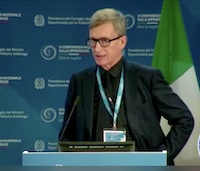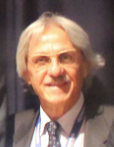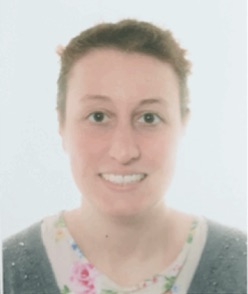Studying at the University of Verona
Academic calendar
The academic calendar shows the deadlines and scheduled events that are relevant to students, teaching and technical-administrative staff of the University. Public holidays and University closures are also indicated. The academic year normally begins on 1 October each year and ends on 30 September of the following year.
Course calendar
The Academic Calendar sets out the degree programme lecture and exam timetables, as well as the relevant university closure dates..
| Period | From | To |
|---|---|---|
| LEZIONI 1° E 2° SEMESTRE | Oct 1, 2018 | May 31, 2019 |
| LEZIONI 1° SEMESTRE 2°-3°-4°-5°-6° ANNO | Oct 1, 2018 | Dec 21, 2018 |
| LEZIONI I° SEMESTRE 1°ANNO | Oct 15, 2018 | Dec 21, 2018 |
| LEZIONI 2° SEMESTRE | Feb 18, 2019 | May 31, 2019 |
| Session | From | To |
|---|---|---|
| SESSIONE INVERNALE A.A. 2017/2018 E 1°SEMESTRE A.A. 2018/2019 | Jan 7, 2019 | Feb 15, 2019 |
| SESSIONE ESTIVA A.A. 2018/2019 | Jun 3, 2019 | Jul 26, 2019 |
| SESSIONE ESTIVA LAUREANDI | Jun 3, 2019 | Jul 5, 2019 |
| SESSIONE AUTUNNALE A.A. 2018/2019 | Sep 2, 2019 | Sep 27, 2019 |
| Session | From | To |
|---|---|---|
| SESSIONE INVERNALE | Mar 4, 2019 | Mar 15, 2019 |
| SESSIONE ESTIVA | Jul 15, 2019 | Jul 31, 2019 |
| SESSIONE AUTUNNALE | Oct 14, 2019 | Oct 25, 2019 |
| Period | From | To |
|---|---|---|
| FESTIVITA' OGNISSANTI | Nov 1, 2018 | Nov 1, 2018 |
| FESTIVITA' IMMACOLATA CONCEZIONE | Dec 8, 2018 | Dec 8, 2018 |
| VACANZE DI NATALE | Dec 24, 2018 | Jan 6, 2019 |
| VACANZE DI PASQUA | Apr 19, 2019 | Apr 28, 2019 |
| FESTA DELLA LIBERAZIONE | Apr 25, 2019 | Apr 25, 2019 |
| FESTIVITA' DEL LAVORO | May 1, 2019 | May 1, 2019 |
| FESTIVITA' DEL SANTO PATRONO SAN ZENO | May 21, 2019 | May 21, 2019 |
| FESTA DELLA REPUBBLICA | Jun 2, 2019 | Jun 2, 2019 |
| Description | Period | From | To |
|---|---|---|---|
| TIROCINIO 1°SEMESTRE ESCLUSI I PERIODI DI VACANZA | TIROCINIO 1°SEMESTRE ESCLUSI I PERIODI DI VACANZA | Oct 1, 2018 | Feb 17, 2019 |
| ATTIVITA' FACOLTATIVA O DI RECUPERO TIROCINIO | ATTIVITA' FACOLTATIVA O DI RECUPERO TIROCINIO | Oct 1, 2018 | Sep 30, 2019 |
| TIROCINIO 2°SEMESTRE ESCLUSI I PERIODI DI VACANZA | TIROCINIO 2°SEMESTRE ESCLUSI I PERIODI DI VACANZA | Feb 18, 2019 | Jul 26, 2019 |
Exam calendar
Exam dates and rounds are managed by the relevant Medicine Teaching and Student Services Unit.
To view all the exam sessions available, please use the Exam dashboard on ESSE3.
If you forgot your login details or have problems logging in, please contact the relevant IT HelpDesk, or check the login details recovery web page.
Should you have any doubts or questions, please check the Enrollment FAQs
Academic staff
 045 8122470
045 8122470
 mattia.marchiori@univr.it
mattia.marchiori@univr.it
 guido.martignoni@univr.it
guido.martignoni@univr.it
 alessia.pardo@univr.it
alessia.pardo@univr.it
 dora.renna@univr.it
dora.renna@univr.it
 annarita.signoriello@univr.it
annarita.signoriello@univr.it
Study Plan
The Study Plan includes all modules, teaching and learning activities that each student will need to undertake during their time at the University.
Please select your Study Plan based on your enrollment year.
1° Year
| Modules | Credits | TAF | SSD |
|---|
2° Year activated in the A.Y. 2019/2020
| Modules | Credits | TAF | SSD |
|---|
3° Year activated in the A.Y. 2020/2021
| Modules | Credits | TAF | SSD |
|---|
4° Year activated in the A.Y. 2021/2022
| Modules | Credits | TAF | SSD |
|---|
5° Year activated in the A.Y. 2022/2023
| Modules | Credits | TAF | SSD |
|---|
6° Year activated in the A.Y. 2023/2024
| Modules | Credits | TAF | SSD |
|---|
| Modules | Credits | TAF | SSD |
|---|
| Modules | Credits | TAF | SSD |
|---|
| Modules | Credits | TAF | SSD |
|---|
| Modules | Credits | TAF | SSD |
|---|
| Modules | Credits | TAF | SSD |
|---|
| Modules | Credits | TAF | SSD |
|---|
Legend | Type of training activity (TTA)
TAF (Type of Educational Activity) All courses and activities are classified into different types of educational activities, indicated by a letter.
Human Anatomy (2018/2019)
Teaching code
4S01811
Teacher
Coordinator
Credits
10
Language
Italian
Scientific Disciplinary Sector (SSD)
BIO/16 - HUMAN ANATOMY
Period
LEZIONI 2° SEMESTRE dal Feb 18, 2019 al May 31, 2019.
Learning outcomes
General anatomy. Topographical subdivision of the human body, reference planes and related terminology - surface anatomy, body cavities and visceral spaces. Locomotor system. General information on skeletal, articular and muscular systems; articular and muscular mechanics - General morphology of the main skeletal and muscular districts - In-depth treatment of the skeleton, joints and muscles of the head and neck - Development of the neurocranium and the splanchnocranium Circulatory system. Heart (vasculature and innervation - conduction apparatus) - Pericardium - Arteries, capillaries and veins (general organization of the general and pulmonary blood circulation) - Blood vessels of the head and neck. Lymphatic system. Central and peripheral lymphatic organs - Lymphatics of the head and neck Regional anatomy: head and neck. Oral cavity - Tongue - Teeth - Salivary glands - Nasal and paranasal cavities - Pharynx - Larynx - Development of facial mass - Endocrine system. Pituitary gland and hypophyseal hypothalamus portal system - Thyroid - Parathyroid - Adrenal gland - Endocrine pancreas - Endocrine elements of the testis and ovary. Central nervous system. Structural and functional organization of the nervous system - Development of the central nervous system - Vascularization - Ventricles and cerebrospinal fluid - Meninges - Sensitive systems: functional and topographical anatomy of the somatosensitive pathways - Somatic and visceral sensitivity of the head; functional and topographical anatomy of the trigeminal system - Chemical senses: taste and smell - Motor systems: functional and topographical anatomy of descending motor pathways - Motor nuclei of the cranial nerves - cerebellum - The nuclei of the base - The hypothalamus and the regulation of functions endocrine and visceral (general organization of the autonomic nervous system) - The limbic system and brain circuits for emotions, learning and memory. Peripheral nervous system. Cranial nerves functionally and topographically linked to the facial massif (trigeminal - facial - glossopharyngeal - hypoglossal) Macro and microscopic morphofunctional aspects of: - Respiratory system (macroscopic and structural aspects of the upper and lower airways, morphofunctional anatomy of the lungs and pleurae); digestive (macroscopic and structural aspects of the alimentary canal and of the attached glands, with particular reference to the control of digestive processes and intestinal motility); - urinary (macro and microscopic aspects of the kidney and urinary tract with particular reference to the anatomical bases of the production of urine and urination) -
Program
General anatomy. Topographical subdivision of the human body, reference planes and related terminology - surface anatomy, body cavities and visceral spaces. Locomotor system. General information on skeletal, articular and muscular systems; articular and muscular mechanics - General morphology of the main skeletal and muscular districts - In-depth treatment of the skeleton, joints and muscles of the head and neck - Development of the neurocranium and the splanchnocranium Circulatory system. Heart (vasculature and innervation - conduction apparatus) - Pericardium - Arteries, capillaries and veins (general organization of the general and pulmonary blood circulation) - Blood vessels of the head and neck. Lymphatic system. Central and peripheral lymphatic organs - Lymphatics of the head and neck Regional anatomy: head and neck. Oral cavity - Tongue - Teeth - Salivary glands - Nasal and paranasal cavities - Pharynx - Larynx - Development of facial mass - Endocrine system. Pituitary gland and hypophyseal hypothalamus portal system - Thyroid - Parathyroid - Adrenal gland - Endocrine pancreas - Endocrine elements of the testis and ovary. Central nervous system. Structural and functional organization of the nervous system - Development of the central nervous system - Vascularization - Ventricles and cerebrospinal fluid - Meninges - Sensitive systems: functional and topographical anatomy of the somatosensitive pathways - Somatic and visceral sensitivity of the head; functional and topographical anatomy of the trigeminal system - Chemical senses: taste and smell - Motor systems: functional and topographical anatomy of descending motor pathways - Motor nuclei of the cranial nerves - cerebellum - The nuclei of the base - The hypothalamus and the regulation of functions endocrine and visceral (general organization of the autonomic nervous system) - The limbic system and brain circuits for emotions, learning and memory. Peripheral nervous system. Cranial nerves functionally and topographically linked to the facial massif (trigeminal - facial - glossopharyngeal - hypoglossal) Macro and microscopic morphofunctional aspects of: - Respiratory system (macroscopic and structural aspects of the upper and lower airways, morphofunctional anatomy of the lungs and pleurae); digestive (macroscopic and structural aspects of the alimentary canal and of the attached glands, with particular reference to the control of digestive processes and intestinal motility); - urinary (macro and microscopic aspects of the kidney and urinary tract with particular reference to the anatomical bases of the production of urine and urination) - reproductive.
| Author | Title | Publishing house | Year | ISBN | Notes |
|---|---|---|---|---|---|
| Seeley | Anatomia e cenni di Anatomia Microscopica Istologia Fisiologia (Edizione 3) | Idelson-Gnocchi srl Sorbona, Napoli | 2014 | ||
| W. Kahle, M. Frotscher | ANATOMIA UMANA - ATLANTE TASCABILE | CEA editore | |||
| SBARBATI Andrea | Anatomia Umana Normale. | Sorbona, Napoli | 2003 |
Examination Methods
viva voice exam
Free choice courses
Modules not yet included
Career prospects
Module/Programme news
News for students
There you will find information, resources and services useful during your time at the University (Student’s exam record, your study plan on ESSE3, Distance Learning courses, university email account, office forms, administrative procedures, etc.). You can log into MyUnivr with your GIA login details: only in this way will you be able to receive notification of all the notices from your teachers and your secretariat via email and soon also via the Univr app.
Gestione carriere
Graduation
Documents
| Title | Info File |
|---|---|
|
|
pdf, it, 288 KB, 11/08/22 |
|
|
pdf, it, 305 KB, 24/03/22 |
|
|
pdf, it, 138 KB, 21/06/23 |
|
|
pdf, it, 379 KB, 24/03/22 |
Student login and resources
Sbarramenti
Documents
| Title | Info File |
|---|---|
|
|
pdf, it, 431 KB, 21/06/23 |
|
|
pdf, it, 292 KB, 21/06/23 |
Riconoscimento carriera pregressa
Documents
| Title | Info File |
|---|---|
|
|
pdf, it, 1215 KB, 21/06/23 |
Obblighi formativi aggiuntivi
Documents
| Title | Info File |
|---|---|
|
|
pdf, it, 275 KB, 21/06/23 |

















































